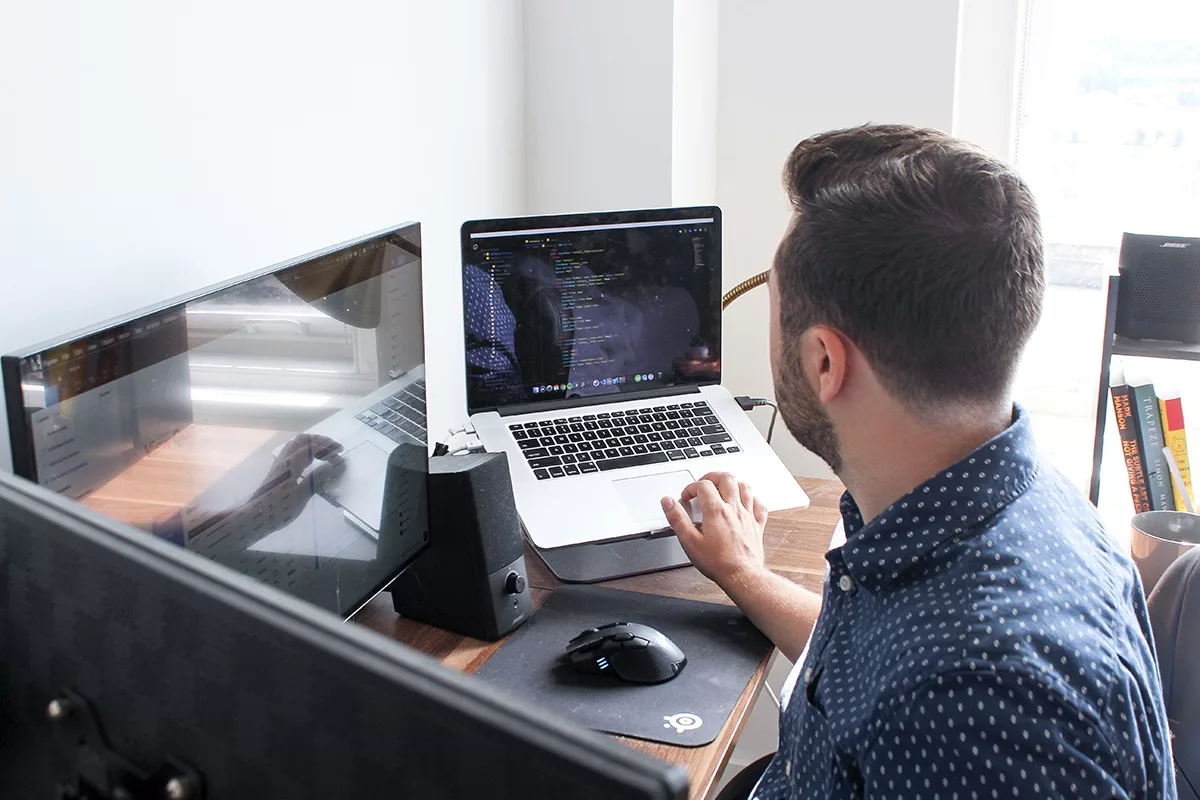If you’ve made the big leap to freelancing or working remotely, congratulations —there’s nothing quite like the feeling of earning a paycheck from the comfort of your own home. You get to skip the commute, make your morning coffee in your own kitchen… heck, you don’t even have to wear pants! But as any veteran freelancer will tell you: with great freedom comes great responsibility. You need the best remote workplace health hacks to stay in top condition.
The Unhealthy Truth About Working for Yourself
An often underestimated reality of remote work life is that you’re truly on your own. Just because you started freelancing doesn’t mean a public health official is going to stop by to inspect whether your work environment is up to code. Because freelancers don’t have managers or co-workers around to reinforce positive work habits, they are especially prone to engaging in self-destructive workplace behavior.
Left unchecked, factors like poor nutrition, bad posture, sleep deprivation, and excessive stress can take a major toll on your physical, mental, and emotional health — and kill your budding freelance career before it’s had a chance to blossom.
The key to success as a freelancer or remote worker is to cultivate greater self-awareness regarding your basic human needs, and to proactively create the work environment and daily habits that will enable you to thrive.
Here are three actionable tips for independent workers, freelancers, and self-starters of all kinds to achieve greater health, well-being, and productivity.
Tip 1: Use an elevated laptop stand for better posture and breathing.

Photo by Eric Skiff on Flickr
Take a moment to consider the way your body is positioned throughout your average workday. Better yet, take a look around your office or coffee shop and look at how other people are sitting, because you’re probably doing the exact same thing: back hunched over, neck bent forward, shoulders tensed, eyes straining to see past the film of dirt on your screen.
If the default position of your body while working is not conducive to proper posture, the stress your body will endure in the years and decades ahead is of serious consequence. Not only will it lead to chronic injury in the future, your posture also affects your breathing, which can impact your focus, mental performance, creativity, and emotional agility.
A quick and easy way to guarantee that you work with better posture every day is to use an elevated monitor or laptop stand, paired with an external mouse and keyboard. This setup brings your screen to eye level and keeps your wrists in a comfortable position, which instantly improves the posture of your back, neck, shoulders, and allows you to breathe more fully.
My favorite tool for this is the Roost stand, paired with the Apple Magic Keyboard and Apple Magic Trackpad. One Conscious Company editor just switched to the Oristand and is loving it. If you’re on a tight budget, you can also find cheaper alternatives like this one — which I’ve used happily for many years — along with a generic keyboard and mouse.
Tip 2: Create a clear transition from personal to work time by designing a morning ritual.

Image by © Michael Prince/CORBIS
While working from home can have lots of time-saving benefits, it also has the drawback of blurring the division between work time and personal time. When you no longer have to physically move to a different place to start your work day, it becomes tempting to do things like responding to emails while you’re still in bed, or procrastinating on important deadlines to take care of errands.
To create a healthy boundary between your work and personal time, design a morning ritual for yourself — one that marks a clear transition from “getting ready for my day” mode to “getting stuff done” mode.
After experimenting with this myself for over five years, I’ve learned that I’m able to maintain the highest level of productivity throughout the day (not to mention feeling more like a human being) when I give myself a full 90 minutes to prepare in the morning. In those 90 minutes, I go through a specific set of activities that I’ve specifically chosen to activate my body, mind, and emotional state — much like how Olympic athletes go through carefully designed routines just before the big race.
In addition to getting dressed, you might consider things like: cooking yourself a healthy breakfast; drinking a full glass of water; doing a short stretch or yoga routine; going for a quick walk or run; meditating; journaling; reflecting on what you’re grateful for; or setting an intention for your day. During this time, it’s important to give yourself the space to not do or think about work-related things.
On the flip side, once you’ve finished your morning routine, make a commitment to focus completely on your work for at least the first hour: no reading unnecessary emails, checking social media, or cleaning up your room.
The key here is to start small and let the habit grow — trying to stuff a dozen new positive habits into your morning ritual or forcing yourself to work for five straight hours once you’ve started working is a recipe for failure. Start by dedicating 30 or even 15 minutes to preparing and energizing yourself for the day ahead — whatever that might look like for you — and discover the impact it has on the rest of your work day.
Tip 3: Take breaks.
 A counterintuitive yet powerful way to improve your focus, energy, and drive throughout the day is to take breaks.
A counterintuitive yet powerful way to improve your focus, energy, and drive throughout the day is to take breaks.
Many of us unconsciously operate on a work mindset that assumes our bodies are machines that should be expected to keep working and working. But the truth is, we are living organisms that operate cyclically, not linearly — everything from our hearts to our lungs, muscles, and eyelids naturally work in ups and downs, opening and closing, expanding and contracting. So it shouldn’t be a surprise that the sum total of our body parts operate in cycles too. Sleep researchers have shown that the 90-minute cycles that you progress through in your sleep can also be observed in our waking state, as we move from higher to lower levels of alertness.
“Willpower isn’t just a skill. It’s a muscle, like the muscles in your arms or legs, and it gets tired as it works harder, so there’s less power left over for other things.” —Charles Duhigg, “The Power Of Habit“
Based on these insights, I achieved massive improvements in both my productivity and wellbeing when I started taking 10- to 15-minute breaks after every hour of work. I like to use an app called “Time Out,” which reminds you to take regular breaks by displaying a message once each work session is up. When I see this blue screen, it’s my cue to get up from my chair and take a quick break. Some Conscious Company editors, meanwhile, swear by an app called “Focus Timer.” No matter the app, it’s the reminder that’s key.
This practice goes hand in hand with my morning routine: once I get to work in the morning, I’m completely focused for the first hour until my “time out.” Then I’m free to take a guilt-free break, enjoying the luxury of my work-from-home lifestyle by making an amazing cup of coffee or preparing a superfood smoothie. The rest of my day operates in cycles, and I take each break as an opportunity to recharge so I can keep performing at my best.
To make the most out of this practice, be intentional about spending those breaks in ways that energize you most: you might go for a quick walk outside, meditate, call up a friend, play with your dog, or dance in your living room; it’s up to you!
Take charge of your remote workplace health
Working from home means you have to be your own boss too. So be the kind of boss you always you wished for — one that kindly, compassionately, and wisely leads you to do your best work. Start applying the three tips above and watch yourself thrive under your own leadership.





